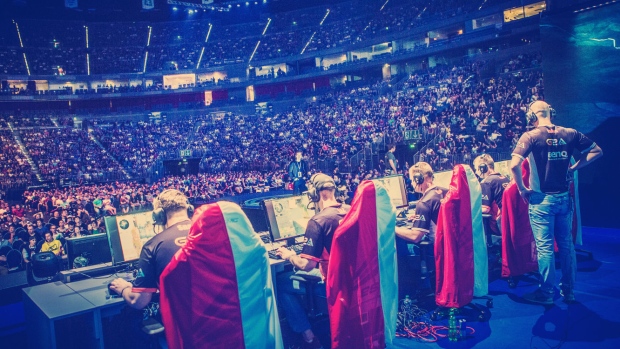
- 2018 marked the inaugural year of the NBA’s gaming league, known as the NBA 2K League. This league is composed of 17 competitive gaming teams that are essentially owned and operated by the same organizations that pay your favorite dunker or three-point shooter
- But is there a real business opportunity here? There are a few data points that favor their efforts. For instance, it is estimated that nearly 1.6 million people play NBA 2K every day, at an average of 90 minutes per day, according to the league. Since consumer attention equals revenue opportunities, this may be a smart move for the league.
Mark Hall Contributor
The last four decades brought us generations of young athletic children whose sole aspiration was to become the nextMichael Jordan or Tom Brady of their sport. Since most people don’t make it to pros, these children grew up to become lifelong viewers and fans of the game and sports teams they love.
Midway through the 1990s, the growth of the video game industry enabled sports fans to live vicariously through the avatar of their favorite athlete or character. Fast forward to today, the broader industry, known as esports, has grown into nearly a billion-dollar market.
Leagues like the National Basketball Association (NBA) and others have taken notice.
In an effort to seize on this monumental shift, the NBA is jumping on board by creating new pathways and meaning to the term ‘professional athlete.’ People who would otherwise have no shot at shaking the commissioners hand while being drafted by the NBA are now doing just that.
2018 marked the inaugural year of the NBA’s gaming league, known as the NBA 2K League. This league is composed of 17 competitive gaming teams that are essentially owned and operated by the same organizations that pay your favorite dunker or three-point shooter.
Each team’s roster will mirror that of the actual game, with five players each covering a different position and a sixth player being in the rotation. What’s unique about this league is that players don’t play avatar versions of real NBA players, but rather digital versions of themselves with increased talent.
But is there a real business opportunity here? There are a few data points that favor their efforts. For instance, it is estimated that nearly 1.6 million people play NBA 2K every day, at an average of 90 minutes per day, according to the league. Since consumer attention equals revenue opportunities, this may be a smart move for the league.
The NBA isn’t the only league making moves like this. In August, the National Football League (NFL) announced a partnership with gaming company Electronic Arts and TV network ESPN to host a competitive league for their famed Madden game series.
True success of these league initiatives won’t be evident for years to come. However, the sheer announcement of such platforms will shape a new generation of aspiring professional athletes who can potentially achieve competitive domination like that of Lebron James, without having to break a sweat.
Mark Hall is a sales leader in a large technology company, contributing to Forbes on the topics of business, culture and leadership. He has been featured in The Huffington Post, Business Insider, among others. All opinions are solely his own and are not reflective of anyone …
Source: https://www.forbes.com/sites/mitsubishiheavyindustries/2018/11/02/the-worlds-most-dominant-manufacturing-powerhouse-is-about-to-get-a-lot-greener/#65e744fa5ddd













